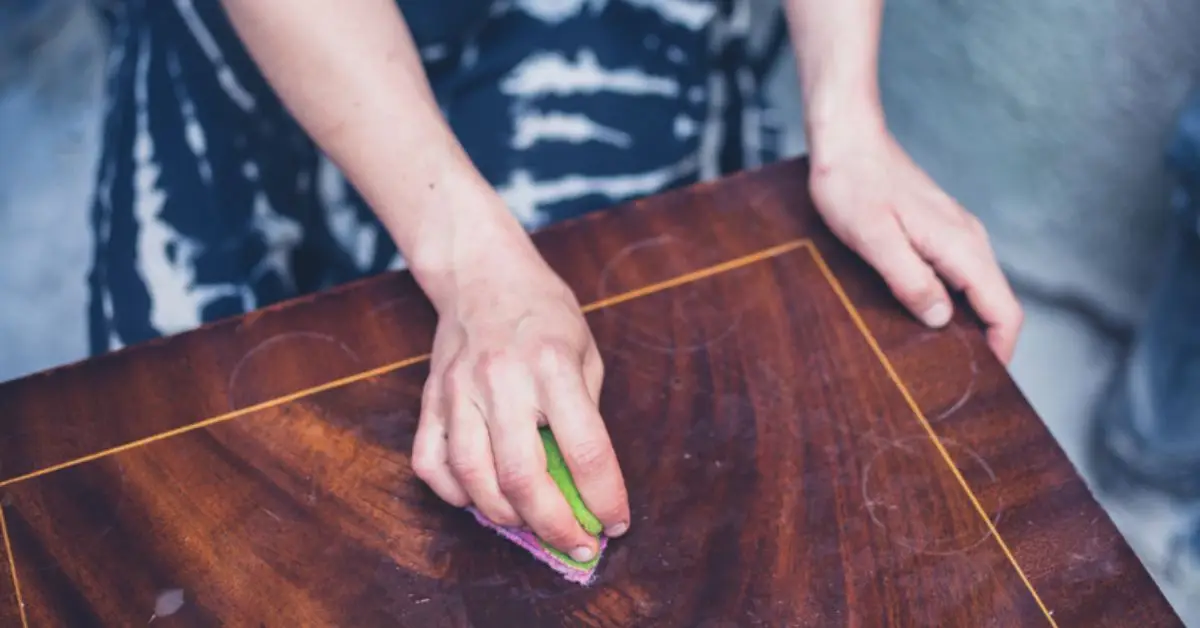10 Easy DIY Fixes for Wood Floor Scratches That Actually Work
I understand that scratches on your hardwood flooring can be rather bothersome. Those marks always seem to draw your attention, whether they are from shifting furniture, your pet’s claws, or simply normal wear and tear. The good news? To fix them, you don’t need to spend a lot of money or employ an expert.
You can make those scratches go away or at least appear much better with a few low-cost tools or even items you most likely already have about the house. I’ve personally tried the majority of these techniques, and I’ll tell you what works so you don’t waste time or money.
If you want immediate, noticeable results without having to undertake extensive repairs or sand down the entire floor, this guide is ideal. You’ll discover something useful here whether you’re preparing your house for sale, getting ready for visitors, or you’re just sick of looking at that one scratch.
You might be surprised by tip #7.Let’s first determine the specific type of scratch you’re experiencing.
The 10 Cheap and Easy Ways to Fix Wood Floor Scratches
1. Rub a Walnut Into the Scratch
Applying a walnut directly to the scratch is one of the simplest and most effective methods. By filling in and darkening the injured region, the walnut’s natural oils help hide the scratch. Simply crack open a walnut, use a soft cloth to buff the area after rubbing the nut’s meat in a circular motion along the scrape.
Why it matters: This solution is chemical-free and reasonably priced. It has gained popularity in do-it-yourself groups due to its ability to blend in with the natural grain of the wood and works best on light, surface-level scratches. Furthermore, a lot of folks already have walnuts in their pantry.
2. Make a Homemade Paste with Olive Oil & Vinegar
Using equal parts olive oil and white vinegar is another easy and natural approach to hide scratches. While vinegar helps clean and brighten the scratched surface, olive oil nourishes the wood. Using a gentle cloth, apply the mixture to the damaged area, massaging it in and then wiping off any excess.
Why it matters: This hack is a time-tested home cure that has been recommended by reliable websites like HouseLogic, which emphasizes how simple and quick it is to update wood flooring. It’s a fairly accessible choice to explore before spending money on commercial items because most people already have these materials in their home.
3. Try Baking Soda + Olive Oil Paste
A paste composed of baking soda and olive oil can be useful if your floor has little surface blemishes or hazy areas. Olive oil adds moisture and sheen, and baking soda works as a mild abrasive to remove surface flaws without destroying the finish.
To produce this paste, combine enough olive oil and a tiny bit of baking soda till the mixture is spreadable. Using a soft cloth, carefully apply it to the scrape, rub it in circular motions, and then wipe it clean.
Why it matters: Older floors that have little surface damage or have lost some of their natural sheen benefit greatly from this technique. It’s a gentle, all-natural method of restoring damaged areas without the use of harsh chemicals or sanding. These incredibly fast home solutions can assist you in solving other typical issues around the house in a matter of minutes if you’re feeling do-it-yourself.
4. Use a Tea Bag Stain for Dark Floors
A simple tea bag is one of the simplest and least expensive solutions to conceal scratches on dark wood flooring. For three to five minutes, steep a black tea bag in hot water, then allow it to cool. Gently massage the tea onto the scratch with a towel or cotton swab. The tea’s inherent tannins serve as a gentle stain, discoloring the scratched surface and blending it in with the surrounding wood grain.
Why it’s importantThis natural color-matching method may seem a bit archaic, but it works remarkably well and doesn’t require any chemicals. If you want a fast fix without purchasing expensive wood stains or markers, this is a wonderful choice. Additionally, it has been suggested as a clever, cost-effective fix for dark hardwood by home renovation specialists like This Old House.
5. Fill with a Crayon or Wax Stick (Color-Matched)
A wood floor-specific wax stick or crayon that matches the surface can be a lifesaver for medium-depth scratches. Hardware and home improvement retailers carry these materials in large quantities. Just fill in the scratch with a crayon or wax stick, then lightly buff the area with a soft cloth to smooth out any excess.
Why it matters: Without the need for specialized equipment, this is among the quickest and easiest do-it-yourself methods for repairing visible scratches. The crayons’ range of wood tones allows you to achieve a very accurate color match that complements your floor, quickly enhancing the overall appearance.
6. Use a Wood Stain Marker for Deeper Blending
A wood stain marker can provide a more accurate and expert finish if the scratch is deeper or more noticeable. You can carefully color the scratch to match the natural tone of the wood with these markers, which come in a variety of tints. The stain dries rapidly after application, allowing the scrape to disappear into the floor.
Why it matters: Stain markers produce a cleaner, more durable effect than crayons or wax sticks. Even if you’re not an expert, applying them is simple, and they’re ideal for high-traffic areas where scratches are more noticeable. To guarantee an exact color match, several experts advise testing the marker first in a hidden location for the best results.
7. Try the Steam & Iron Method for Dents
The steam and iron approach can assist in restoring the original shape of compressed wood fibers if your floor has dents instead of scratches. After covering the dent with a damp towel, lightly press a warm iron over it for a little while. The steam produced aids in the wood’s swelling and lessens the dent’s visibility.
Why it matters: This method works remarkably well for dents rather than scratches and reduces the visibility of damage without requiring refinishing. However, you run the danger of ruining the finish if you go overboard. Better Homes & Gardens and other reliable sources suggest this as a do-it-yourself solution for small floor damages.
8. Apply Wood Filler, Sand & Stain (For Deep Gouges)
Wood filler is your best option for chips or gouges that are deeper than the surface. Sand the damaged area smooth after applying the filler and allowing it to dry. Next, integrate the repair into the rest of your floor with a wood stain or finish that matches.
Why it matters: Your floor’s appearance and feel can be restored using this area repair method. Even though it requires more time and work, it is the best method for repairing damage that cannot be fixed by basic surface treatments.
9. Buff With Steel Wool (Only On Certain Finishes)
Scratches can be subtly buffed into the surrounding finish using very fine #0000 steel wool. This technique is most effective on floors with a long-lasting finish, such as polyurethane, but it must be done carefully to prevent further damage.
Why it matters: Without completely refinishing the floor, steel wool buffing can be an excellent spot-fix to reduce scratches. It’s not advised for all wood finishes, though, so be careful to try in a discreet location first or refer to the maintenance recommendations for your floor.
Of course. Here is the polished, helpful tone, minimum bolding, and emoji-free version of point 10 and the Before You Start section:
10. Quick Fix: Shoe Polish, Coffee Grounds, or Marker
If you re short on time and need a fast way toconceal scratches, dark brown shoe polish, used coffee grounds, or even a matching permanent marker can help. These items temporarily darken the scratch, making it less visible in just seconds.
Why it matters: These are ideal for last-minute touch-ups before guests arrive, but they are not long-term solutions. They re especially useful for high-traffic areas where you just need the scratch to disappear for a while. Just apply carefully to avoid staining surrounding wood.
Before You Start Patch Test & Know Your Floor Type
Before applying any of these methods, alwaysdo a patch teston an inconspicuous area of your floor. It s also important to know your floor type: is itwaxed, sealed polyurethane, engineered wood, or solid hardwood?
If you re not sure what type of floor you have,this complete guide to hardwood flooringcan help you identify and care for it correctly.
Every wood finish reacts differently. What works on one floor couldruin another s finish. This section helps readers avoid costly mistakes and gives your article addedtrust and authorityby focusing on safety first.
How to Prevent Scratches from Coming Back
After putting in the effort to repair those floor scratches, the last thing you want is for them to come back next week. The truth is, most floor damage happens slowly through daily routines, unnoticed habits, and lack of simple precautions. But you can easily avoid future scratches by making a few smart changes around your home.
-
Add felt pads
to the legs of all chairs, tables, and moveable furniture. Even light movement can create new scratches over time, especially on smooth hardwood. -
Use rugs or runners
in heavy foot traffic zones like hallways, near doors, or under dining tables. These don t just protect your floor, they also soften the look of the room. -
Keep your pet s nails trimmed
. Even a well-behaved dog or cat can leave surface marks when running across wood floors. -
Clean your floors with care
. Avoid harsh brooms, abrasive brushes, or regular vacuums with stiff rollers. Instead, use a soft-bristle broom or a vacuum designed specifically for hardwood floors.
These small precautions make a big difference in how long your wood floors stay smooth and scratch-free. By focusing on prevention now, you re saving yourself more work and more money down the road.
Final Thoughts You Probably Don t Need a Pro
Most homeowners assume they need to call in a flooring contractor the moment they see a scratch. But the reality is,you can handle the vast majority of surface damage yourselfwithout spending hundreds of dollars or clearing your weekend schedule.
Shallow scratches, dull spots, and light scuffs respond incredibly well to quick DIY solutions. Whether you re using pantry staples like olive oil or tools like a wood marker or filler, the fixes are often fast, cheap, and surprisingly effective.
Of course, there are times when a professional is worth calling especially for deep gouges, warped boards, or damage that covers a large area. For example, if water damage is the root cause,these expert repair tipswill help you prevent further floor deterioration. But those cases are the exception, not the rule. This guide gives you all the tools you need to feel confident handling everyday wear and tear on your own.
Tried one of these fixes yourself?
Share your experience in the comments what worked, what didn t, or any DIY tricks you ve used to rescue scratched wood floors. Your tip might help someone else reading today.
Want more practical home fixes like this?VisitBuild Like Newfor smart, budget-friendly repair tips that actually work.
Disclaimer:This article is for informational purposes only. Always test any repair method in a small, hidden area first. For major damage or valuable flooring, consult a professional.
Table of Contents
-
The 10 Cheap and Easy Ways to Fix Wood Floor Scratches
-
1. Rub a Walnut Into the Scratch
-
2. Make a Homemade Paste with Olive Oil & Vinegar
-
3. Try Baking Soda + Olive Oil Paste
-
4. Use a Tea Bag Stain for Dark Floors
-
5. Fill with a Crayon or Wax Stick (Color-Matched)
-
6. Use a Wood Stain Marker for Deeper Blending
-
7. Try the Steam & Iron Method for Dents
-
8. Apply Wood Filler, Sand & Stain (For Deep Gouges)
-
9. Buff With Steel Wool (Only On Certain Finishes)
-
10. Quick Fix: Shoe Polish, Coffee Grounds, or Marker
-
-
Before You Start Patch Test & Know Your Floor Type
-
How to Prevent Scratches from Coming Back
-
Final Thoughts You Probably Don t Need a Pro
-
1. Rub a Walnut Into the Scratch
-
2. Make a Homemade Paste with Olive Oil & Vinegar
-
3. Try Baking Soda + Olive Oil Paste
-
4. Use a Tea Bag Stain for Dark Floors
-
5. Fill with a Crayon or Wax Stick (Color-Matched)
-
6. Use a Wood Stain Marker for Deeper Blending
-
7. Try the Steam & Iron Method for Dents
-
8. Apply Wood Filler, Sand & Stain (For Deep Gouges)
-
9. Buff With Steel Wool (Only On Certain Finishes)
-
10. Quick Fix: Shoe Polish, Coffee Grounds, or Marker




